Few creatures better represent their continent than kangaroos, which have become global symbols for Australia.
Despite their worldwide reputation, kangaroos are frequently misinterpreted, both at home and abroad. Did you know that the animal we’ve grown to love as charming and cuddly is considered a pest by its human neighbors? Farmers despise them, especially since they sneak into fields and consume cattle feed.
Of course, there are many things to admire about these creatures that outweigh their negative characteristics. Here are ten lesser-known kangaroo facts.
-
Kangaroos are the world’s largest marsupials.
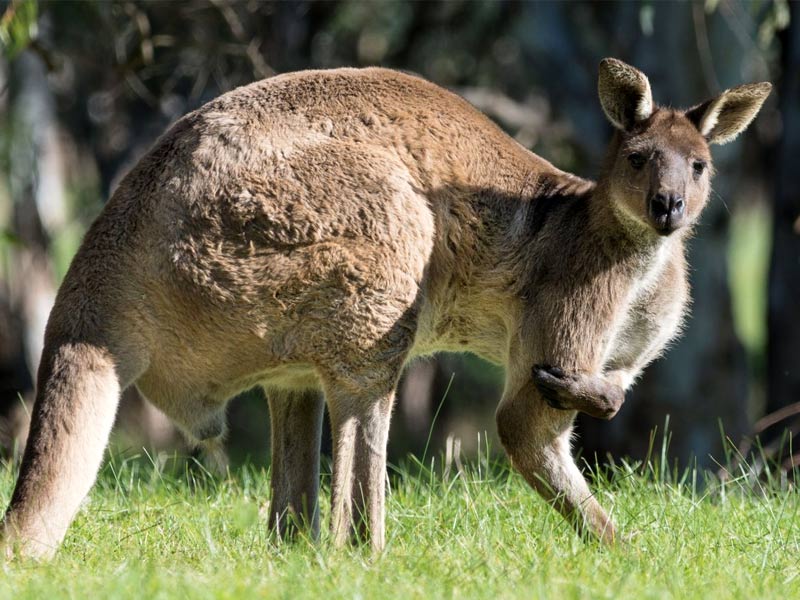
Kangaroos are the world’s biggest marsupials. The red kangaroo is the biggest species of kangaroo (by weight), at more than five feet tall (not including a three-foot-long tail) and weighing 180 pounds. Eastern grey kangaroos are larger than western grey kangaroos, with some mature males reaching over seven feet in height, but they are considerably thinner, weighing only up to 120 pounds. The most prevalent kangaroo species are red, eastern grey, and western grey.
-
They come in a variety of shapes and sizes.
Kangaroos are members of the genus Macropus, which means “big foot.” Several smaller but similar-looking species are also members of that genus, although the distinction between them is not always evident. Wallabies are the smallest members of the genus, whereas wallaroos are species of intermediate size.
The name “kangaroo” can refer to any of these creatures, although it is usually reserved for the four largest: red, eastern grey, western grey, and antilopine kangaroos. It’s also used for tree kangaroos, which belong to a separate genus but are part of the macropods taxonomic family, which includes kangaroos, wallaroos, wallabies, tree kangaroos, pademelons, and quokkas. Outside of the macropod family, small marsupials known as rat kangaroos resemble their much bigger cousins.
-
They are both left-handed
Humans and a few other primates have “handedness,” or the proclivity to use one hand more naturally than the other. Scientists used to believe that handedness was a unique aspect of primate evolution, but new evidence indicates that it is equally widespread in kangaroos.
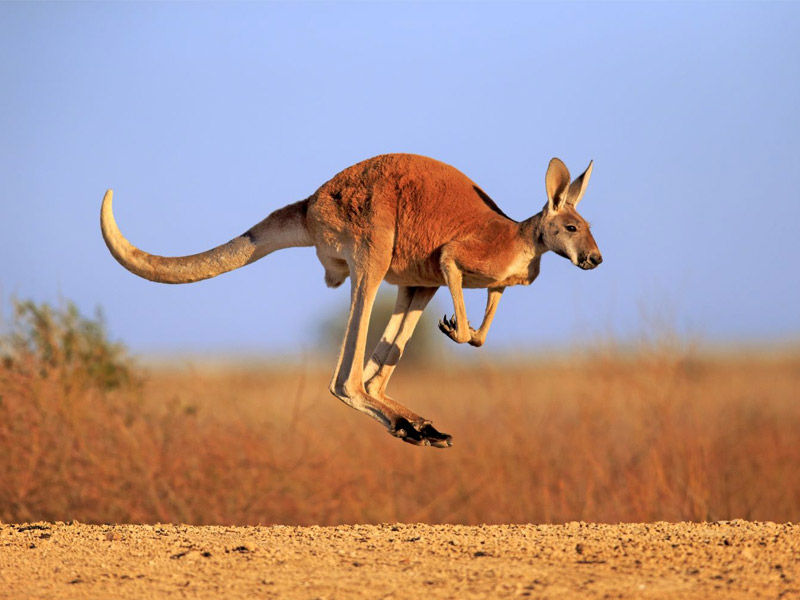
Researchers discovered that red kangaroos, eastern greys, and red-necked wallabies are mostly left-handed, utilizing that hand for chores like grooming and eating 95% of the time. Kangaroos’ hands appear to be specialized for distinct sorts of labor, with the left hand used for accuracy and the right for strength. Researchers believe this calls into question the notion that handedness is unique to primates, adding that it might be an adaptation to bipedalism.
-
They’re Known as a Mob When They Get Together
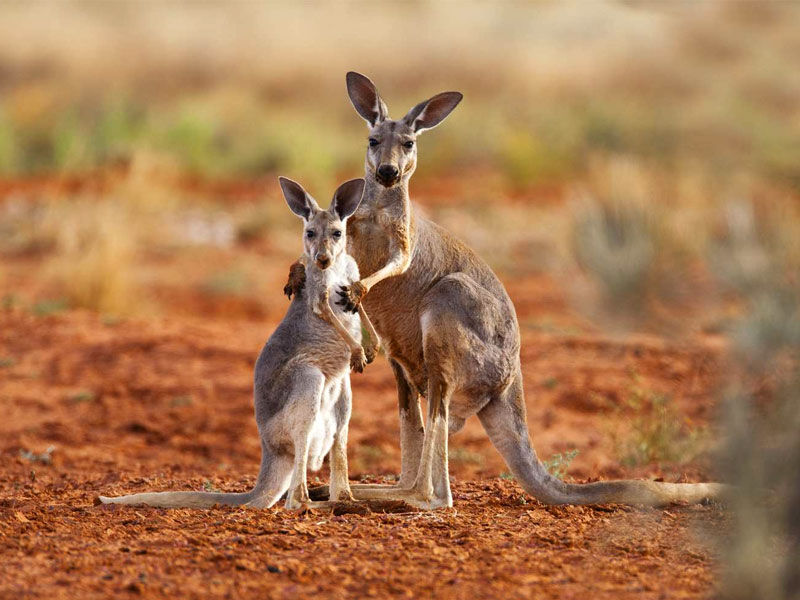
Kangaroos move and graze in groups called mobs, troops, or herds. A kangaroo mob can consist of a few or several dozen people, with loose relationships that allow members to switch mobs. During mating season, males may fight for females by kicking, boxing, or even biting, although the group is ruled by its biggest male. Male kangaroos are referred to as bucks, boomers, or jacks, whilst females are referred to as does, flyers, or jills.
-
Some People Can Hop 25 Feet

Hopping is an energy-efficient strategy for kangaroos to travel, allowing them to traverse long distances while searching for food in dry Australia. They normally travel at a modest speed, although they may sprint if required. A red kangaroo can hop at 35 miles per hour, leap six feet off the ground, and run 25 feet in a single bound.
-
They Make Use of Their Tails as a Fifth Leg
Kangaroos frequently use their tail as a fifth leg while traveling over smaller regions at a slower speed. Although it appears strange, a study on red kangaroos has shown that their large, strong tails may offer as much propulsive force as their front and rear legs combined.

When a kangaroo wants to go more than roughly 15 feet, it skips its tail and begins hopping.
-
Joey can sleep till the pouch is empty.

Kangaroos have a five-week gestation period, during which they normally give birth to a single offspring known as a joey. The newborn joey, hardly bigger than a grape, must crawl through its mother’s fur to her pouch using its forelimbs. The joey will spend the next several months growing and developing in the pouch (called a marsupium).
When a mother kangaroo becomes pregnant again while a joey is still in her pouch, the younger joey becomes dormant until the pouch is empty. When the elder joey leaves her pouch, the mother kangaroo’s body transmits hormonal signals to restart the younger joey’s development.
-
Predators occasionally drown their adversaries.
Kangaroos in Australia don’t have many natural predators, especially since huge carnivores like thylacines and marsupial lions are extinct. A few creatures are known to feed on kangaroos, usually joeys or adults from smaller species. Dingoes, as well as introduced species such as red foxes, dogs, and feral cats, are among these predators.
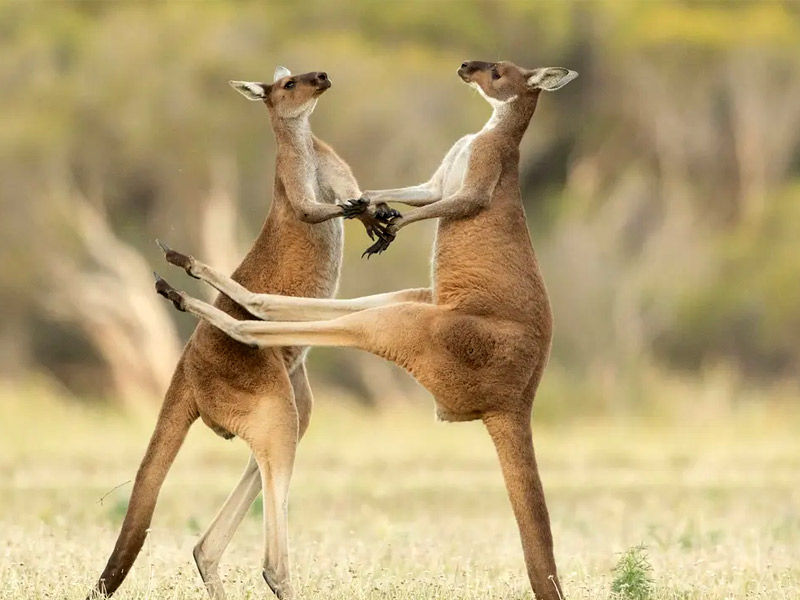
When a kangaroo is pursued by a predator, it frequently escapes toward the water. Kangaroos are remarkably adept swimmers, so this may just be an escape technique (again, thanks to that massive tail). However, in certain circumstances, the prey may be luring the pursuer into a trap.
When a kangaroo is chest-deep in water, it will occasionally turn around and confront the predator, catching it with its forelimbs and drowning it.
-
Some People May Offer Joeys to Predators
Fighting off predators may be more difficult for smaller kangaroos and other macropods such as wallabies, wallaroos, and quokkas. Mother macropods have been observed dropping their joeys and fleeing when pursued by a predator.
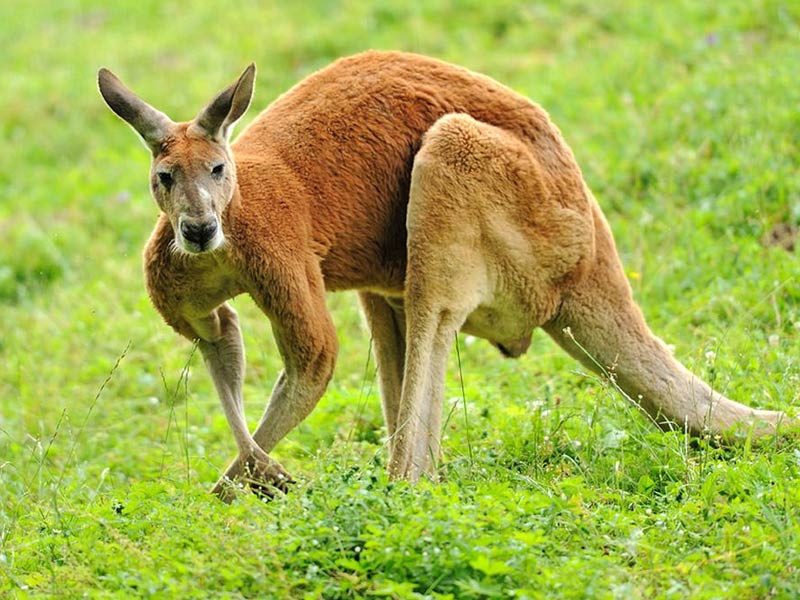
Female quokkas ensnared in wire traps attempted to flee when they spotted a human coming in one research. Their joeys frequently dropped from the pouch during the disturbance. “Given the muscular control that female quokkas have over the pouch opening… it is plausible that this is a behavioral reaction rather than an incidental response,” the researchers stated. (Don’t worry, the joeys were safely returned to their moms’ pouches.)
Also read: 13 Best Places For Adventure Sports In India
Gray kangaroos and swamp wallabies have also displayed this behavior. It may seem inconceivable to humans, but experts believe it might be an adaptive survival strategy. Kangaroo moms breed faster than humans, and when their lives are on the line, sacrificing one joey may seem reasonable—at least to them.
-
They eat grass like cows but produce less methane.
Kangaroos are all herbivores that eat mostly grasses but also some moss, bushes, and fungus. Kangaroos, like cattle and other ruminant animals, regurgitate their meal and chew it as cud before digesting it. This isn’t required for their digestion, and they only do it on occasion—possibly because it causes them discomfort.
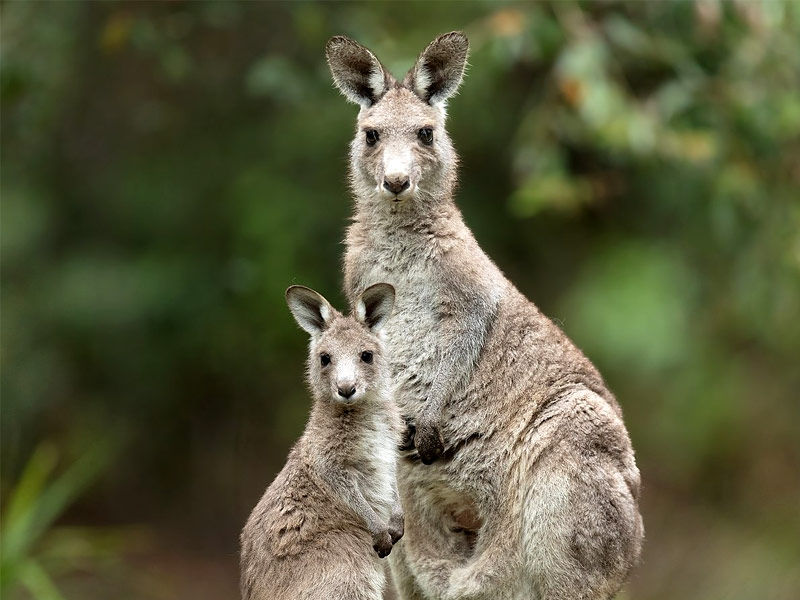
The tube-shaped stomachs of kangaroos differ greatly from the four-chambered stomachs of ruminants. Cows are notorious for emitting large volumes of the strong greenhouse gas methane when they breathe and burp. Despite similar diets, kangaroos create only around 27% of ruminants’ body mass-specific amounts of methane.
Kangaroo stomachs transport food more swiftly, and research shows that kangaroo gut microorganisms are in a metabolic state more tuned for growth or biomass creation than for methane generation.





























